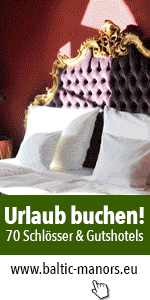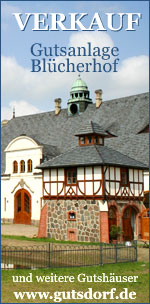Castles
Castle, manor house or farm house? You can`t find a castle in this list?
Here you can find an explanation
Bad Doberan
In 1171, Bishop Berno of Schwerin and the Obotrite prince Pribislav founded a Cistercian monastery on the site of what had been the Germanic settlement of Althof. ... more
Barth
According to records, a permanent castle structure, "Castrum Barth", existed in Barth from Wendish times. In a document dating from 1324, the castle is referred to as a fortification. ... more
Bothmer Castle
Schloss Bothmer is situated in the area known as the "Klützer Winkel", near the town of Klütz. It is the largest Baroque palace complex in Mecklenburg-Vorpommern. ... more
The Belvedere in Broda, Neubrandenburg
From its elevated position, the terrace of the Belvedere offers a magnificent view across Neubrandenburg's lake, Tollensesee. ... more
Bützow
The original castle in Bützow was destroyed and rebuilt in the 13th century. The castle erected in 1263 served up until the 14th century as a bishop's residence, and the ribbed vaulting of the chapel stems from this time. ... more
Dargun Castle
In 1172, Danish monks founded a Cistercian monastery on the site of what is now Schloss Dargun, and one year later the altar was consecrated by Bishop Berno of Schwerin. ... more
Franzburg
The town of Franzburg is situated in the middle of what is today the district of Nordvorpommern. In the 12th and 13th centuries, the region belonged to the Principality of Rügen. ... more
Friedrichsmoor Hunting Lodge
Jagdschloss Friedrichsmoor is a hunting lodge situated within the Lewitz conservation area, a landscape characterised today by woodland, meadows, ditches and ponds. ... more
Friedrichsthal Hunting Lodge
Friedrichsthal is a north westerly district of the capital "city" of Mecklenburg-Vorpommern, Schwerin. In 1790, the government official August Georg von Brandenstein built a simple half-timbered summerhouse there, which, after various changes of owner, was acquired in 1797 by Grand Duke Friedrich Franz 1 for 4,000 Taler (silver coins). ... more
Gadebusch Castle
Gadebusch is one of the oldest towns in Mecklenburg. Its Renaissance palace was built in 1571 by Duke Christoph of Mecklenburg on the site of a castle first mentioned in the 8th century, destroyed in 1181 and then rebuilt. ... more
Hunting Lodge Gelbensande
Picturesquely situated in a wooded area of heathland near Rostock, Jagdschloss Gelbensande was once the summer residence of Duke Friedrich Franz III of Mecklenburg (1851 - 1897) and his wife Anastasia Michailovna Romanova (1860 - 1922). ... more
Grambow Castle (partly in german)
Schloss Grambow was originally constructed around 1840/45 as a home for the Jacobson family. It was designed by architect Carl Adolph Hermes as a large, two-and-a-half storey building with 15 windows along its width, overlooking a park. ... more
Granitz Hunting Lodge
Jagdschloss Granitz, which is built on an elevation of 106m known as the Tempelberg, offers visitors a breathtaking view over the island of Rügen. ... more
Güstrow Castle
The most important Renaissance building in northern Germany was built in the 16th century, initially as the seat of Duke Ulrich of Mecklenburg. Duke Ulrich's old castle had burnt down, and the new residence, as the times demanded, was built to impress. ... more
Hohenzieritz Castle
Hohenzieritz was a fief of Hans Altwich von Holtzendorff at the beginning of the 18th century. After a predecessor building burned down in 1712, he had a simple manor house built. ... more
Ludwigsburg Castle
Ludwigsburg castle is idyllically situated on the edge of the Greifswald Bodden (Bay of Greifswald). It was built between 1577 and 1592 on the orders of Duke Ernst Ludwig of Pommern-Wolgast as a dowager's residence for his wife. ... more
Ludwigslust Castle
In 1724, a hunting lodge and park for Duke Christian Ludwig II of Mecklenburg-Schwerin were built in the village of Klenow. In 1754, the village was renamed Ludwigslust. ... more
Neustadt-Glewe
Construction of the palace at Neustadt-Glewe began in 1619 for Duke Adolf Friedrich I of Mecklenburg. The ducal architect was Gerhart Evert Piloot, who died in 1629, causing work to come to a standstill. ... more
Penkun Castle
The tiny town of Penkun, which first appears in historical records in 1269, nestles like an island between three lakes. In 1480, the manor at Penkun was enfoeffed to Werner von der Schulenburg. ... more
Plüschow Castle
In 1450, Plüschow is recorded as belonging to the von Bülow family. In 1758, the estate was acquired by the Hamburg-based merchant Philipp Heinrich Stenglin, who established it as a summer residence for himself and his wife. ... more
Prillwitz Castle
The Prillwitz estate was owned in the 14th century by the von Peccatel family. It then passed to the von Heydebreck family, then the von Maltzahn family, and was later owned, until the end of the 17th century, by the Blankenburg family. ... more
Pudagla Castle (Manor House)
The village of Pudagla is located on the island of Usedom, on a narrow stretch of land between lake Schmollensee and the bay formed by the Achterwasser lagoon. ... more
Putbus Castle
Putbus was held by the von Putbus family from the 12th century until 1945. The "stone house" is mentioned as the family home in historical records dating to as early as 1371. ... more
Remplin Castle
In the mid-18th century, the von Hahn family built a three-wing Baroque palace at Remplin. Starting in 1865, alterations were carried out by Duke Georg of Mecklenburg-Strelitz, who wanted the palace to reflect the style of the French Renaissance and called upon the services of the Berlin-based architect Friedrich Hitzig. ... more
Herzogliches Palais Rostock
In 1705, Adolf Friedrich II bought what had formerly been a hall of residence belonging to Rostock University, and in 1713, work began under architect Leonhard Christoph Sturm to transform it into a ducal palace for Duke Karl Leopold. ... more
Castle Schwerin
The island on which the current palace stands was, in the 8th/9th century, the site of one of the main castles of the Slavic Obotrite tribe. The castle was destroyed in 1160 and rebuilt by the counts of Schwerin, whose residence it was until 1358, when it was taken over by the Dukes of Mecklenburg. ... more
Reuterstadt Stavenhagen Castle
The little town of Reuterstadt Stavenhagen was originally overlooked by a castle on the road from Neubrandenburg to Malchin. ... more
Ueckermünde Castle
Ueckermünde is a harbour town and officially recognised health resort situated directly on the Stettiner Haff (Bay of Szczecin), a shallow inlet which connects the north east of Germany with Poland. ... more
Wiligrad Castle
Schloss Wiligrad is situated to the north of Schwerin near the village of Lübstorf, in a wooded area which extends down to the shore of Lake Schwerin. ... more
Fürstenhof Wismar
Between 1256 and 1358, Wismar was the main residence of the Princes of Mecklenburg. The Fürstenhof (Princes' Palace) is made up of two wings set almost at right angles to each other. ... more
































